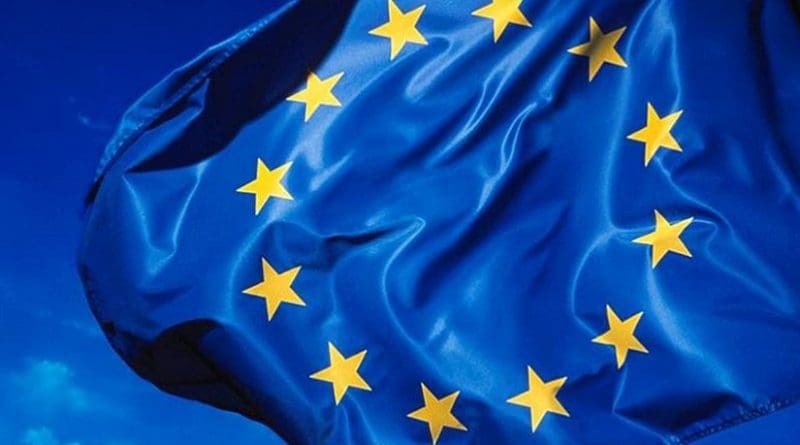A Future For European Union: Now More Critical Than Ever
By IESE Insight
Amid rampant euroskepticism, it’s worth recalling the euro-optimism felt between 1985 and 2005. EU members were buoyed by hopes surrounding the euro, the union’s expansion, the draft Constitutional Treaty and the Lisbon Agenda, which promised an economy that would be competitive, sustainable, and above all, socially fair.
Then, in 2005, the proposed Constitutional Treaty was voted down in referendums in France and the Netherlands. In 2007, the financial crisis began, and in 2010, the debt crisis took hold, which many point to as a prelude to the end of the European Union, because it has spawned crises in EU institutions, its leadership, its narrative and its very legitimacy.
However, Europe’s future has yet to be written. So argues IESE professor Víctor Pou in his 2017 book, which analyzes the causes of this perfect storm.
An Ambitious Project
The European Union was born of a shared political vision based on peace, prosperity and the reconciliation of former enemies after World War II. With the welfare state and the redistribution of income as pillars to support economic growth and social peace, the EU combines idealism, technocracy and a decidedly economic focus.
Additional members and treaties, coupled with a greater transfer of sovereignty by the member countries, led to the current EU, governed by the Treaty of Lisbon since 2009.
Mounting Challenges
The Brexit vote has been one of the most resounding blows dealt in recent years: for the first time, a member country will exercise the exit clause. It may not be the last to do so: until Greece stabilizes its economy, the threat of Grexit will continue to linger.
Outside the EU, pressures also mount. The election of Donald Trump threatens the traditional U.S.-EU alliance; meanwhile, Putin-led Russia works to recreate the former Soviet empire at Europe’s expense. Terrorism, the failure of the Arab Spring, and the war in Syria and resultant migrant crisis also threaten European stability.
Faced with this reality, the EU has no choice but to revise its foreign and security policies — including the European Neighborhood Policy (ENP), which looks to countries to the east and south. It must rise to the challenge of turning threats into opportunities: after all, both Russia and the countries of North Africa and the Middle East still have great potential for positive interaction with Europe.
Solutions to the Migrant Crisis
In 2014, the EU had 507 million inhabitants, of which only 20 million (4 percent) were non-EU residents. Therefore, says the author, taking in two million refugees is not only feasible; it is a legal and humanitarian imperative and an opportunity to rejuvenate an aging Europe.
However, this will be difficult without proper border control, which the EU has lost due to a lack of coordination. The Schengen Agreement, which had abolished border controls in 26 European countries, seems on the verge of collapse: Germany, France, Denmark, Austria, Norway and Sweden have restored border controls while others, such as Hungary and Slovenia, have put up fences and deployed armed forces along their borders.
To save Schengen, the EU must manage migration flows and ensure the security of Europeans by implementing a series of urgent measures, until longer term policies are in place. These include:
- Sending money, other resources and personnel to immigration processing centers in Greece and Italy to ensure that immigration control and asylum claims are properly managed.
- Convincing member countries to fulfill their commitments and take in their already-agreed-upon numbers of refugees.
- Establishing better readmission agreements with non-EU countries to repatriate those who don’t have the right to be in Europe.
- Establishing legal pathways to enter Europe, including establishing refugee processing centers in countries such as Turkey, Egypt and Jordan.
- Making better use of Schengen, Eurodac (the EU asylum fingerprint database) and data exchanged per the Prüm Convention to reduce the threat of terrorists entering Europe from abroad.
The Road to Integration
There is a solution to the euro crisis, says Pou. Member countries must relinquish some sovereignty and adopt a fiscal union with the ability to transfer resources and mutualize at least part of the debt.
What’s essential, says the author, is that the founding members leave the door open for the rest to gradually settle into their respective levels of commitment until eventually constituting a real European federation.
Onwards and Upwards
As Pou says, the history of EU integration shows that its greatest crises have always been followed by great progress. Now the first step is to win back citizens’ trust and then work on rebuilding the EU based on its traditional values.
More European Union is needed: major crises will not be solved unless members agree to hand over more sovereignty. EU institutions must also become more transparent, more democratic, more efficient and closer to ordinary citizens. Crucially, imaginative institutional solutions must be translated into a new and improved treaty.
Brexit and the Trump phenomenon may be just the push the EU needs. Now more than ever, the world needs the EU to be a bastion of democracy and respect for human rights and fundamental freedoms. It must stand against the perils of populism, the autocracies of China and Russia, and the unpredictability of Trump’s United States.


Until the Euro implodes the EU is doomed.